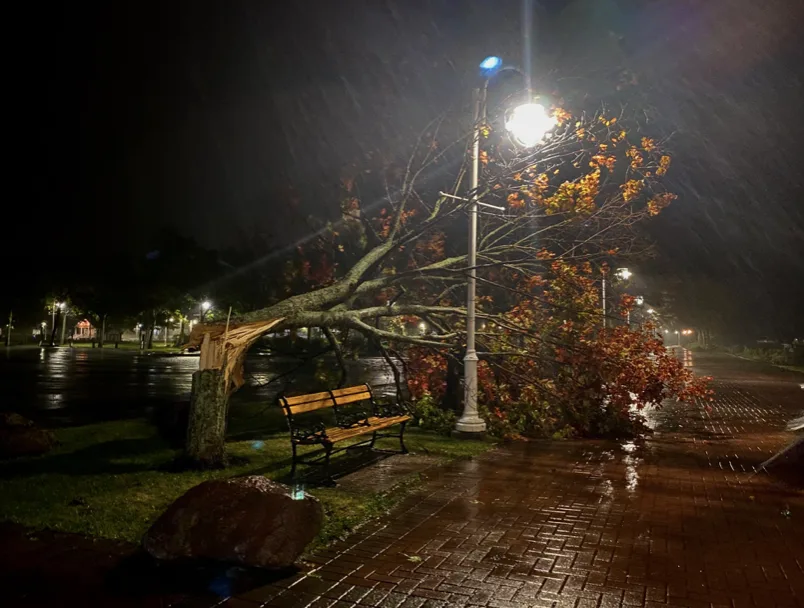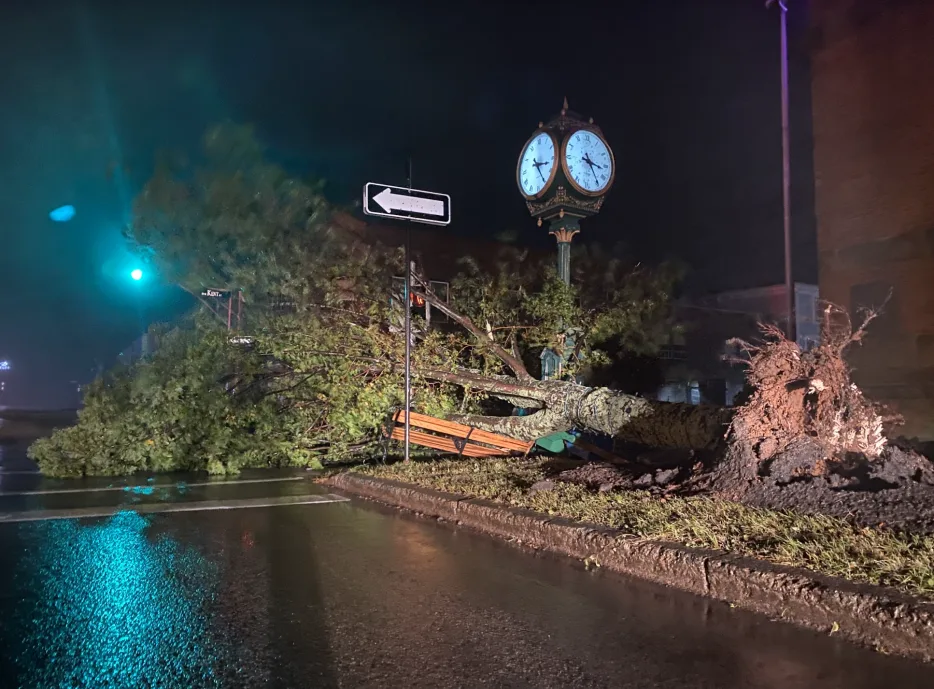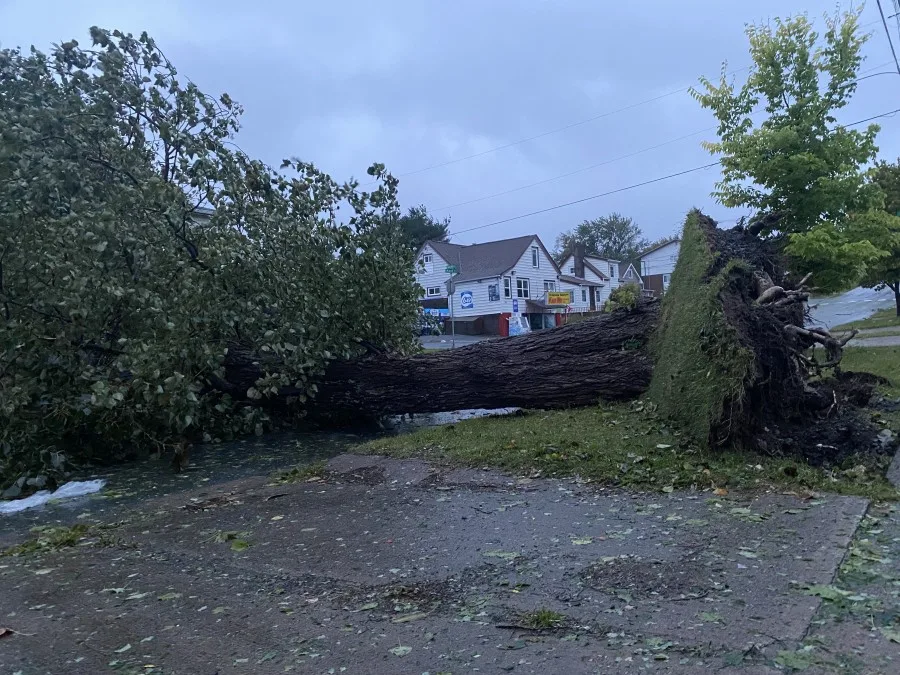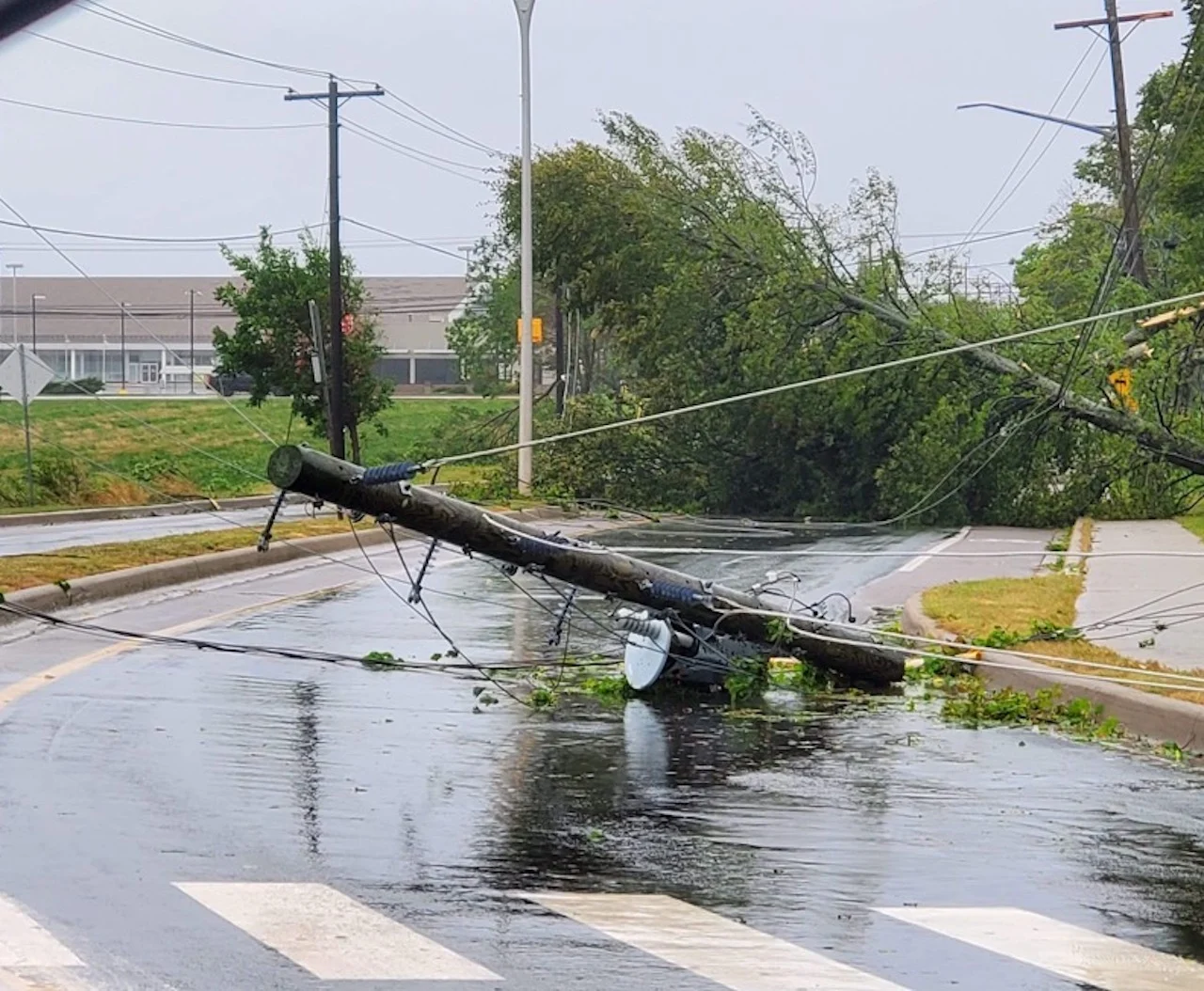
PHOTOS: Homes swept away, severe East Coast damages after Fiona
Downed trees resulted in widespread power outages after Fiona made landfall as a post-tropical cyclone over Hart Island, Nova Scotia early Saturday morning.
Fiona made landfall as a post-tropical cyclone over Hart Island, N.S., early Saturday morning, with maximum sustained winds of 148 km/h and a minimum pressure of 931 millibars, potentially becoming the deepest low-pressure system ever recorded on Canadian soil.
High winds, heavy rainfall, coastal flooding, and storm surge all resulted in significant damage across Atlantic Canada. Many roads remain blocked by fallen trees and Nova Scotia Power says power outages could last for days.

Charlottetown, PEI (Jaclyn Whittal/The Weather Network)
Power is slowly returning to regions across Atlantic Canada, including P.E.I. where, at one point on Saturday afternoon, 95 per cent of the island was without power.
The town of Port aux Basques, Newfoundland declared a state of emergency after homes were swept away into the sea. Part of the town is under an evacuation order.

Powerful winds cause large tree to come down on Main Avenue in Halifax, N.S. (Nathan Coleman/The Weather Network)
Cape Breton Regional Municipality and Victoria County have declared a state of local emergency after extensive damage to buildings and blocked roads due to fallen trees.
The Magdalen Islands in Quebec also remain under a state of emergency.
On Saturday afternoon, Prime Minister Justin Trudeau stated that Ottawa has approved a request for aid from Nova Scotia and the Canadian Armed Forces will be deployed to assist with relief efforts.
See below for a look at the impacts in Atlantic Canada after Fiona’s landfall:
WATCH: Storm surge comes 'out of nowhere' on Cape Breton

(Jessica Mills)
WATCH: Record winds batter reporter on Iles-de-la-Madeleine
Thumbnail image: Jaclyn Whittal, Charlottetown, P.E.I.
With files from CBC News










